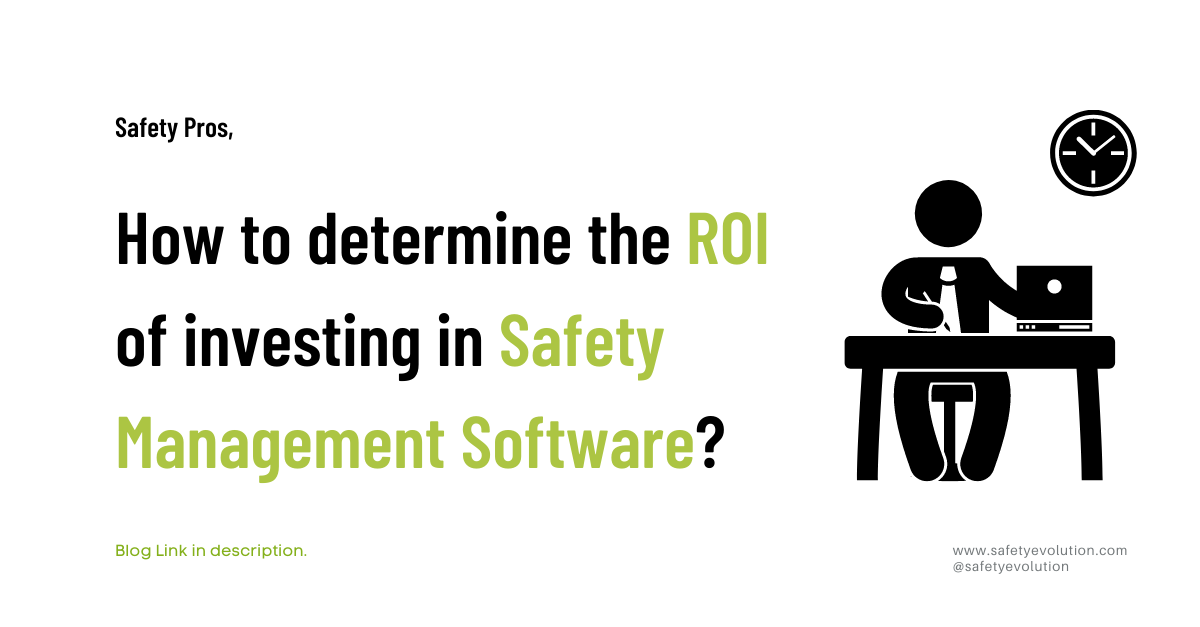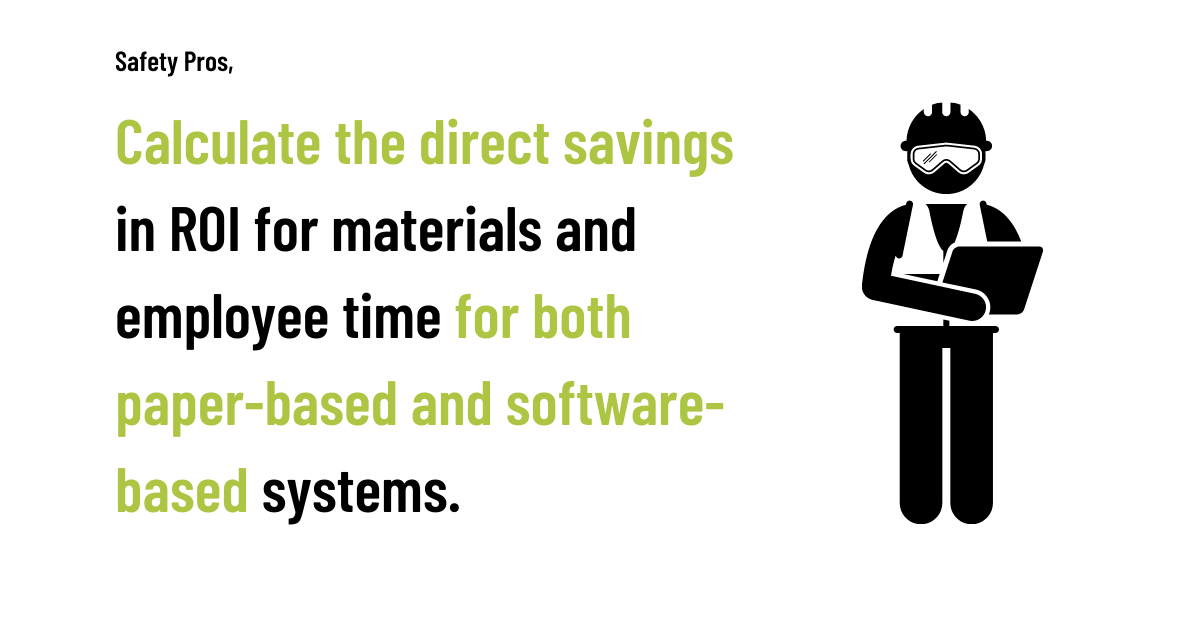The Return on Investment includes benefits beyond “cost”. ROI is the big picture and can tell the story of smart business decisions that have positive impacts on time management, resource management, and job satisfaction for employees when the investment addresses their pain points on a day-to-day basis!
These value-adding factors can most certainly be tracked and calculated to show increased productivity, efficiency, and time/money saved when managing your Safety Programs. Seeing these Returns on their Investment is going to be essential to get buy-in from Management.
So what is Return on Investment? (ROI)
%20and%20why%20do%20you%20need%20to%20use%20it%20when%20picking%20Safety%20Software_.png?width=1200&name=what%20is%20Return%20on%20Investment%20(ROI)%20and%20why%20do%20you%20need%20to%20use%20it%20when%20picking%20Safety%20Software_.png)
Return on investment determines the long and short-term benefits, related to the cost of the product (the investment) and to the savings (cost reduction) that the investment will bring in both the short and the long term. Direct Savings, like the ones listed above (money and time), can be the easiest to calculate. But, it's vital not to leave out Indirect Savings.
Related mainly to efficiency and cost, the Return on Investment also includes Indirect Savings such as:
- The number of hours recouped annually that can be dedicated to other company-related tasks.
- Lower WCB costs - fewer injuries as a result of proactively addressing hazards and less labour to achieve and maintain COR/SECOR
- Downtime is reduced through effective inspections and closure of corrective actions
- Consistency and ease of use with the Safety Program's Software helps to build confidence in Management and commitment to doing their part to ensure a Safety Program is thriving.
- Employee buy-in is more grounded in having tools that help them engage in Safety that make sense for them.
Safety Software provides a more efficient and compliant system, which protects the company’s reputation and increases the potential for successfully bidding for jobs.

How-to Guide
How to determine the ROI from Safety Management Software
1. Calculate direct savings from the investment for materials and employee time, current (paper-based) and future (using software):

How to calculate the Reduced cost of Materials as a result of investing in Software:
- List materials and goods impacted by the use of software
- Assign current and future costs to each item
- Determine savings ( current cost - future cost = savings)
- Add up the annual savings
How to calculate the Reduced cost of “people” time as a result of investing in Software:
- List tasks that would be impacted by the use of software ( e.g. paper-based auditing system/audit performed in software)
- Estimate time to perform each task with the current system and the future system
- Determine the average hourly rate to perform each task and multiply the difference in hours by the average rate.
- This will give the savings for each task
- Calculate the direct savings by adding the cost savings from each task
2. Calculate Indirect Savings from the use of the investment in Safety Program Software

Materials, time, and labour are the savings categories that most do a great job capturing in their ROI calculations. Where you can do some digging and discover some amazing surprises through the Indirect Savings. Examine your companies processes and divisions/ departments to find any areas that have a primary or secondary interaction with the Safety program where efficiencies would benefit the companies finances.
- Compile a list of other benefits resulting from the use of the software that will be more unique to your companies processes and services.
- Estimate the cost savings for each benefit.
- Calculate the indirect savings by adding up the cost savings from each item.
3. Determine the cost of the Software Safety (Investment)

Having an accurate and detailed breakdown that realistically captures the cost of switching to software helps you speak confidently and credibly to the net gain it will mean for your organization. You will also be prepared to answer and manage the worries and concerns of your company's decision-makers.
-
- Initial implementation cost ( e.g. onboarding current SMS, inspections etc)
- Monthly and ongoing costs ( e.g. price per month per user)
- Training/support costs
- Equipment purchases ( e.g. tablets)
4. Calculate the Total Cost Savings
Use the following formula to determine the amount of "Cost Savings":
- Direct Savings + Indirect Savings - Investment cost = Cost Savings
5. Calculate ROI for going paperless with Safety Management Software:

Using this formula you can take the research and data you have collected and calculated above to calculate the ROI:
-
- ROI = (Cost Savings of Investment) / (Cost of Investment) = Return
- Return x 100 = Return on Investment in %
If you would like to chat with one of our team members to help you calculate the ROI for your company, click below to book a discovery call:

To see new content like this one every week as well as periodic free safety resources made by Safety Pros for Safety Pros, subscribe to our newsletter: